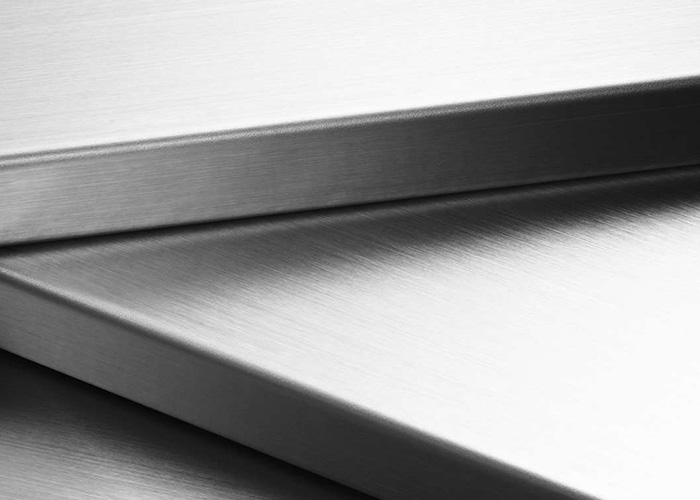Types of Stainless Steel

Stainless Steel is available in hundreds of different alloys (grades). The difference is based on the chemical composition of various elements. Stainless Steel grades are essentially alloys of iron with more than 10.5% chromium. These grades may contain additional elements of nickel, manganese, carbon, nitrogen and silicon. They can further be modified for special purposes by addition of molybdenum, titanium, niobium, silicon, sulphur etc. A wide range of these grades have been developed based on specific requirements. These are classified into following broad categories based on their microstructure:
Austenitic Stainless Steel:
The most common types of stainless steels are austenitic stainless steels. Compared to other types of stainless steels, austenitic stainless steels are extremely high in nickel content. Generally, they will also contain high amounts of chromium, nitrogen, and molybdenum. Austenitic Stainless Steel grades are characterized by superior corrosion and oxidation resistance, weldability, ductility and toughness compared to ferritic and martensitic Stainless Steel grades for similar levels of chromium. Austenitic Stainless Steel grades exhibit excellent resistance to atmospheric corrosion. They effectively withstand attack of organic acids (e.g. acetic, lactic, citric etc.), exhibit good resistance to oxidizing acids (e.g. nitric acid) and fair resistance to mineral acids (e.g. sulfuric acid).
These grades are well suited for severe forming. Some grades work hardened to a high degree while others have been developed to minimize this tendency. Work hardening is advantageous in certain cases where high strength is required. Austenitic Stainless Steel grades are nonmagnetic in annealed condition but depending on composition, they may become mildly magnetic when cold worked. These Stainless Steel grades possess good high temperature properties such as creep strength and resistance to oxidation or scaling. They also exhibit excellent low emperature ductility and impact strength.
Austenitic Stainless Steel grades can be readily fabricated by bending, drawing, spinning, punching, drilling, machining and welding and can be readily polished to a high finish. These attributes make them very versatile and popular for diverse applications in a variety of industries. There are two broad categories of Austenitic Stainless Steel - Chrome-Nickel (300 Series) and Chrome Manganese (200 Series). Currently, Chrome-Nickel is the largest produced Stainless Steel category globally. Typical applications for this category include food processing, chemical plants, pharmaceutical equipment, hospitals, textile, architectural, building construction, kitchenware, consumer durables etc. Chrome-Manganese Stainless Steel is the fastest growing of all Stainless Steel categories on account of its high performance to cost ratio. Its applications include kitchenware, cutlery, sinks, automotive trim, architectural, buildings, furniture, buses, trains etc.
Martensitic Stainless Steel:
Martensitic stainless steels are structurally similar to ferritic stainless steels, with the only real differences being their percentages of carbon. Martensitic Stainless Steel grades are plain chromium grades containing 11.5 % to 18% of chromium with relatively high carbon content (0.1% - 1.2%). This type of steel is typically used in situations that call for high strength, but average resistance to corrosion. You’ll often see it used in valves or pumps, though it has many more applications aside from these.
Initially developed for cutlery, these are well suited for applications requiring high hardness and resistance to abrasion and erosion. These grades are magnetic and display fair cold forming characteristics. Although these can be hardened by air cooling, oil quenching is sometimes used to assure uniform hardening. These grades can be welded but require stress relieving after welding. They exhibit their best corrosion resistance in the hardened condition and perform well in mildly corrosive environments. Martensitic Stainless Steel grades are commonly used for knife blades, turbine blades, surgical instruments, fasteners, shatts, spindles, valves and pins.
Ferritic Stainless Steel:
Ferritic Stainless Steel grades are non-hardenable plain chromium grades with chromium content varying from 10.5% to 28% and with low carbon content. These are magnetic and exhibit a better resistance to corrosion than martensitic grades. These grades are employed in applications where the desired formability, weldability and corrosion resistance is between those of martensitic and austenitic types. The ferritics can be polished or buffed to achieve high luster.
Duplex Stainless Steel:
Duplex Stainless Steel grades contain relatively high chromium (between 18% and 28%) and moderate amounts of nickel (1% to 8%). This combination of ferritic and austenitic structures is called duplex. Many of these grades contain molybdenum (1% to 5%) and nitrogen (0.05% to 0.3%). Some duplex Stainless Steel grades also contain manganese (up to 5%), copper (up to 2%) and tungsten (up to 2%). These grades exhibit high resistance to stress, corrosion cracking and chloride ion attack and have higher yield strength than that of austenitic or ferritic steel grades. These properties combined with suitable design lead to material saving. High quality fabrication and welding are possible if the operator is trained well. These grades are used in marine applications, offshore platforms, paper and pulp industry, chemical, petrochemical and desalination plants.
Two of the more common types of duplex stainless steel include S31803 stainless steel and S32205 stainless steel.
Send us Your Requirement Now
Email: info@dmmetals.com
